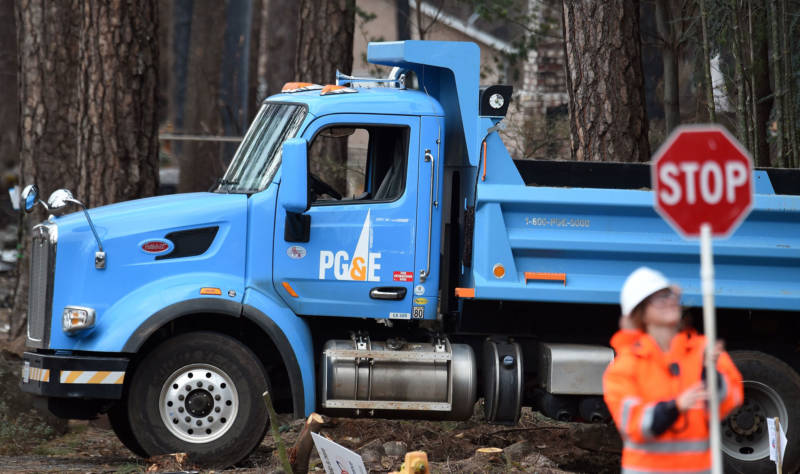The trust’s stock component has long concerned some survivors. But in the last week, three fire victims who served on the committee representing survivors in the bankruptcy have taken the stunning step of resigning their positions. One, former Chico Police Chief Kirk Trostle, called the plan "deeply flawed and very risky."
Another, Adolfo Veronese, who lost his business in the 2017 Nuns Fire, said market turmoil prompted his decision to step down. "I decided to [resign] because of the pandemic,” Veronese told KQED. “It opened my eyes a lot more because of the stock, because the value will fluctuate so much. We don't know what the value is. It fluctuates on a day-to-day basis.”
The impacts were underscored Thursday when attorneys for the victims' committee told a federal judge in a court filing that PG&E is refusing to guarantee that the $6.75 billion in stock it has promised victims will actually hold its value amid the current market turmoil. PG&E said in a statement it is reviewing the filing and remains committed to doing right by communities impacted by wildfires.
‘Cash is King’
PG&E's top brass have characterized the inclusion of the company’s stock as routine in large victims' compensation trusts like this.
“It's a fairly common practice,” PG&E President and CEO Bill Johnson told KQED following a recent California Public Utilities Commission hearing. “There are a lot of people that support this. I mean, it got approved in a bankruptcy court. That doesn't happen just by itself."
“I'm going to do everything I can to make sure that the stock price is up so that when they sell it, they get a good price and distribute that to the victims,” Johnson added.
But bankruptcy experts interviewed by KQED say the inclusion of a company’s stock — particularly one still enmeshed in bankruptcy proceedings — is exceedingly rare.
“I don’t know of a trust that I’ve worked on where there was a stock component,” said Kenneth Feinberg, who oversaw the 9/11 Victim Compensation Fund, the fund for victims of the BP Deepwater Horizon oil spill and more than a dozen other high-profile trusts.
“That’s not to say it isn’t a rather creative compensatory mechanism,” he said. “But that’s news to me in my experience.”
He added, “Cash is king.”
The few previous instances of stock-funded trusts are a fraction of the size of PG&E’s trust for fire victims. A PG&E spokesperson pointed to Armstrong World Industries, a onetime asbestos manufacturer based in Lancaster, Pennsylvania, that filed for bankruptcy in 2000. The Asbestos Personal Injury Settlement trust — worth an estimated $2 billion — was given two-thirds of Armstrong shares when the company emerged from bankruptcy in 2006. The trust was still selling off shares a decade later. Through the trust, victims remained one of the company’s largest shareholders for years.
‘We Should Have Been Put First’
Becoming long-term PG&E shareholders is a fate many fire survivors hope to avoid, and one that may weigh on them as they prepare to vote on the settlement. If approved, it would effectively make them 21% of the company's shareholders. Ballots are being sent out over the next few days as part of the bankruptcy process.
"We've already lost so much," said Lisa Williams, a Camp Fire survivor who relocated from Paradise, California, to Las Vegas after her home was destroyed in the 2018 blaze. In multiple letters to Judge Dennis Montali, who is overseeing the PG&E bankruptcy,
Williams has vociferously aired her misgivings about being compensated with stock in a company responsible for such devastation. “For our settlement to depend on PG&E stock is psychological torture.”
Williams notes that PG&E agreed to pay all cash in an $11 billion deal with insurance claim holders — many of them hedge funds — in September. At the time, attorneys for wildfire survivors were still negotiating with the utility.
“The insurance companies and investors wouldn't take the stock, so it's being forced on us,” Williams said. “It isn't fair to victims. We should have been put first.”

